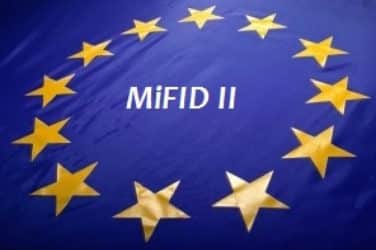The buy side is increasingly looking to trade cost analysis – TCA – to help it meet its growing mandate for transparency.
Whether is from regulators, legislators or Joe Q Public, asset managers are under more and more pressure to document myriad trade details. The institutional investor has been employing TCA as a means of trimming costs and fees, which in the end, are what regulators et al are trying to minimize and disclose to an investing public that feels it has been either uninformed or misled about.

Richard Johnson, Greenwich
And the need for TCA is not just for equities trades anymore. As the buy side has entered an era of multi-asset trading – foreign exchange, fixed income securities and other asset classes – TCA has been the analysis tool of choice, according to a recent report from market consultancy Greenwich Associates.
The report, “Transaction Cost Analysis: Opportunities Within and Across Asset Classes,” noted that asset managers are relying on TCA systems to give them increased transparency into their execution and order routing in order to optimize trading performance while meeting the demands of regulators seeking documentation of best execution compliance.
“Revelations of impropriety at a number of alternative trading venues and the ongoing debate around market structure and high-speed traders have put additional pressure on trading desks to measure transaction costs at every point along the trading cycle,” said Richard Johnson, Vice President of Market Structure and Technology at Greenwich Associates.
Joe Hipps, Managing Director and Head of Product Development for TCA at Trade Informatics confirmed th reports findings in a conversation with Traders Magazine.
“Demand for TCA is coming from investors to the extent those investors have to comply with regulation (e.g. MiFID II). FX and fixed income markets are characterized by lack of price and volume transparency, fragmented data sources, reporting delays, or some combination thereof,” Hipps said “There are exceptions, of course–government bonds, for instance–but by and large, these problems limit the actionable intelligence an investor can derive from analyzing FX and fixed income data. Consequently, investors are looking to TCA providers to satisfy a regulatory standard rather than inform and improve decision making.”
TCA is currently utilized by 81% of equity trading desks—up slightly from 2015 when 79% reported using TCA. These usage rates suggest TCA is reaching a saturation point in equity markets. The typical buy-side equity trading desk spends about 5% of their total budget on TCA, which averages $225,000 per desk.
With equity market usage topping out, asset managers are transiting TCA to the other asset classes they trade. Greenwich said that 58% of FX trading desks use TCA systems now, and 32% of fixed-income trading desks employ TCA.
TCA + EMS = Market Share
Greenwich noted that while execution broker ITG remains the dominant TCA provider in equities, a dozen vendors have achieved some level of market penetration. Many of the leading firms, such as ITG, all couple TCA with strong execution management platforms. With trades flowing through the EMS, these providers automatically have a full transaction data set on which to perform TCA, which can be embedded directly into the EMS. This is a compelling value proposition.
Fixed income TCA is only just beginning to see adoption by the buy side. Greenwich Associates said there are analysis tools expected from Bloomberg, MarketAxess and Tradeweb – all of which will also link their TCA systems to their execution platforms.
FX TCA is a few steps ahead of fixed income in terms of buy-side adoption, driven in part by a more easily accessible data set for analysis and the increasing usage of algorithmic trading and electronic trading venues. Markit, Bloomberg and ITG are the most-used vendor solutions among our study participants, with some startups such as Global Trade Analytics entering the picture.
“Going forward, TCA providers will win market share by delivering critical features like venue analysis, EMS/OMS integration, and peer comparison,” Johnson said.




